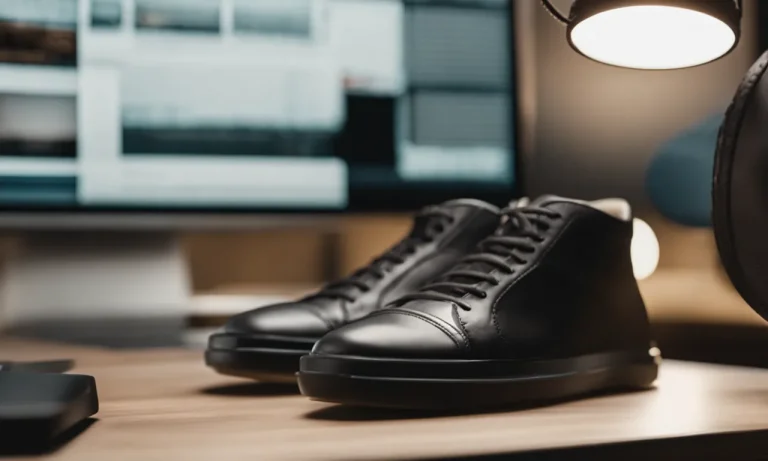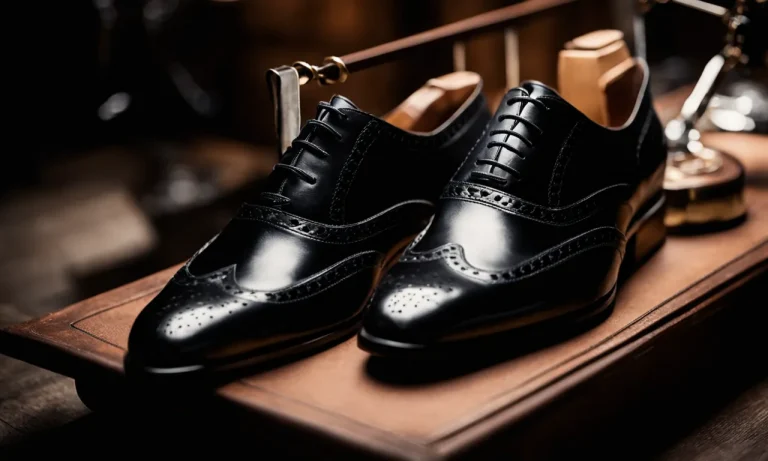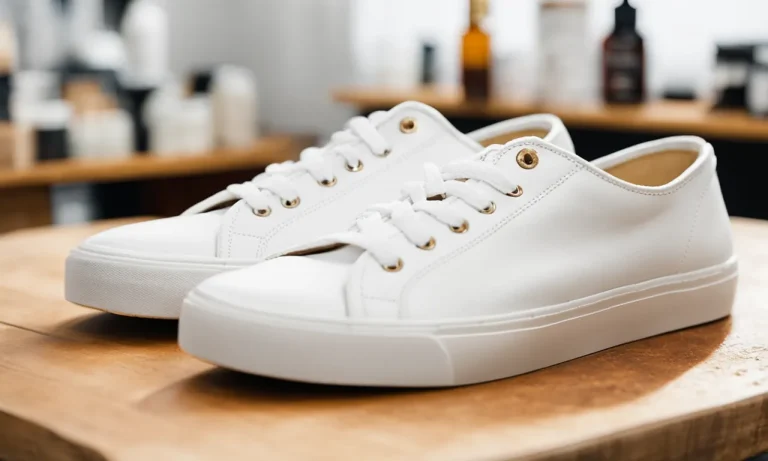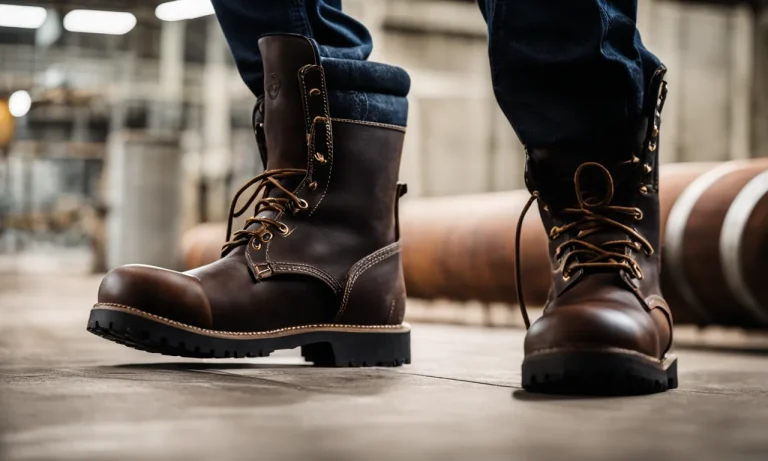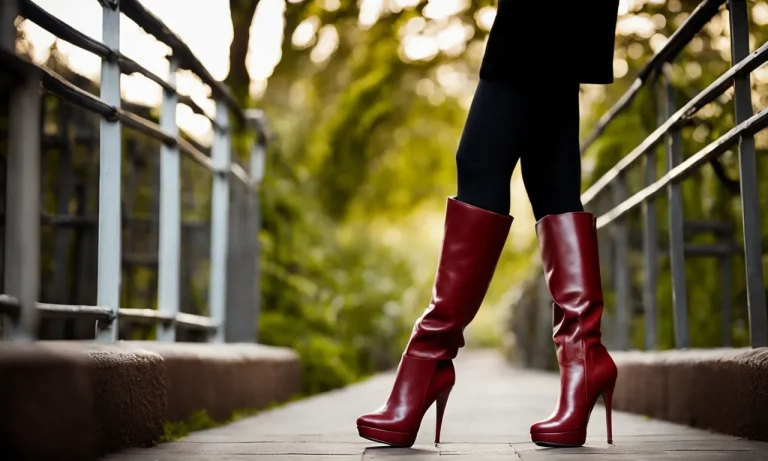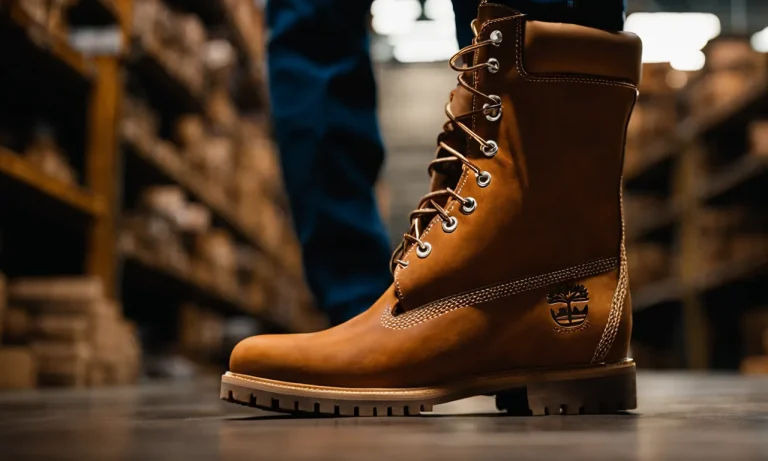Finding the perfect running shoe fit is crucial for injury prevention and optimal performance. The toe box – the front part of the shoe that covers and protects your toes – plays a key role in that ideal fit. But how much wiggle room should your toes really have inside your running shoes?
Let’s take a detailed look at toe box fit and how much space your toes need when running.
If you’re short on time, here’s a quick answer: aim for about a thumb’s width of space between the tip of your longest toe and the end of the shoe’s toe box. The ideal toe box room allows your toes to spread out naturally when your foot hits the ground while running.
Toe Box Basics: Shape and Size Matter
When it comes to choosing the right running shoe, one of the key considerations is the toe box. The toe box refers to the front part of the shoe that accommodates the toes. It may seem like a small detail, but the shape and size of the toe box can have a significant impact on comfort, performance, and foot health.
The Importance of Toe Splay
Toe splay, or the natural spreading of the toes, is an important factor to consider when determining the ideal toe box size. During running, the toes bear the brunt of the impact and provide stability.
A narrow or constricting toe box can restrict toe splay, leading to discomfort, blisters, and even conditions like bunions or hammertoes. On the other hand, a wider toe box allows for natural toe splay, promoting better balance, stability, and overall foot health.
According to a study published in the Journal of Foot and Ankle Research, a wider toe box can also help improve running performance. The study found that runners who wore shoes with a wider toe box experienced improved propulsion and increased running speed compared to those wearing narrower toe boxes.
Different Foot Types Require Different Toe Boxes
Not all feet are created equal, and different foot types require different toe box shapes and sizes. It’s essential to understand your foot type to choose the right running shoe that provides optimal comfort and support.
For individuals with wider feet, a shoe with a roomier toe box is crucial. Look for shoes labeled as “wide” or “wide toe box” to ensure a comfortable fit. On the other hand, those with narrower feet may prefer shoes with a more snug toe box to prevent excess movement and provide better stability.
Getting the Right Length
While the width and shape of the toe box are important, it’s equally important to get the right length. A running shoe that is too short can cause discomfort, black toenails, or even foot injuries. On the other hand, a shoe that is too long can lead to excess movement and rubbing, resulting in blisters.
When trying on running shoes, make sure there is about a thumb’s width of space between your longest toe (usually the big toe) and the end of the shoe. This allows for proper toe movement and prevents any potential issues caused by a cramped toe box.
Remember, everyone’s feet are unique, and finding the right toe box size is a personal journey. It’s always a good idea to try on different shoe brands and models to find the one that fits your feet the best.
Consulting with a professional shoe fitter or a podiatrist can also provide valuable guidance in selecting the ideal running shoe.
For more information on choosing the right running shoe, you can visit websites like Runners World or Verywell Fit for expert advice and recommendations.
How to Check for Proper Toe Box Room
When it comes to choosing the right running shoe, one of the most important factors to consider is the amount of room in the toe box. Having enough space in the toe box is crucial for comfort, performance, and injury prevention. Here are some tips on how to check for proper toe box room:
The Thumb Test
A simple and effective way to check if there is enough room in the toe box is to perform the thumb test. Take off your shoes and place your thumb on the tip of your longest toe. If there is a thumb’s width of space between your longest toe and the end of the shoe, then you have enough room.
This allows for proper toe splay and prevents your toes from hitting the front of the shoe during running.
Consider Toe Box Height Too
While checking for proper toe box room, it’s also essential to consider the height of the toe box. The height should be adequate to accommodate the natural shape of your toes without causing any discomfort or pressure.
If the toe box is too shallow, it can lead to cramped toes and potential issues like blisters or toenail problems. On the other hand, if the toe box is too high, it may cause your foot to slide forward, leading to instability and potential injuries.
Watch for Pressure Points
Another important aspect to consider when checking for proper toe box room is to watch out for any pressure points or areas of discomfort. Put on the shoes and walk around, paying attention to how your toes feel.
If you notice any pinching, rubbing, or tightness in the toe area, it may indicate that the shoe does not have enough room for your toes. It’s crucial to find a shoe that provides ample space and does not constrict your toes in any way.
Remember, every foot is unique, and what works for one person may not work for another. It’s always a good idea to try on different brands and styles of shoes to find the one that suits your foot shape and provides the right amount of room in the toe box.
Don’t be afraid to seek guidance from knowledgeable professionals, such as podiatrists or running shoe experts, who can offer valuable advice and recommendations based on your specific needs.
Toe Box Issues: When Things Are Too Tight or Too Loose
One of the most important factors to consider when choosing a running shoe is the fit of the toe box. The toe box refers to the front part of the shoe that surrounds and provides space for the toes. It is crucial to strike a balance between having enough room in the toe box to allow for natural foot movement and preventing excessive movement that can lead to discomfort or injury.
Black Toenails and Bruising
When the toe box is too tight, it can cause friction and pressure on the toes, leading to black toenails and bruising. This is a common issue among runners, especially those who engage in long-distance running.
The repeated impact and movement of the foot within a tight toe box can cause blood vessels to rupture, resulting in discoloration and pain. To avoid this problem, it is essential to choose a running shoe with adequate room in the toe box to accommodate natural foot swelling and movement during exercise.
Ingrown Toenails
Another toe box issue that runners may encounter is ingrown toenails. When the toe box is too tight, it can compress the toes, causing the nails to grow into the skin. This can be extremely painful and may require medical intervention to treat.
To prevent ingrown toenails, it is crucial to select a running shoe with a wide enough toe box that allows for proper toe alignment and prevents unnecessary pressure on the nails.
Blisters and Calluses
A tight toe box can also lead to the development of blisters and calluses. When the toes are cramped together, friction can occur between the toes or between the toes and the shoe. This friction can result in the formation of blisters, which are fluid-filled pockets on the skin.
Additionally, the continuous rubbing of the toes against the shoe can cause calluses, which are thickened areas of skin. To avoid these issues, it is recommended to choose a running shoe with enough space in the toe box to prevent excessive friction and rubbing.
Tripping Hazards
On the other hand, a toe box that is too loose can also pose problems for runners. If there is too much room in the toe box, the foot may slide forward within the shoe, increasing the risk of tripping or stumbling. This can be particularly dangerous during high-intensity activities or uneven terrain.
It is important to find a running shoe that provides a secure fit in the toe box, allowing for some movement without compromising stability and safety.
Tips for Finding the Right Toe Box Fit
When it comes to running shoes, finding the right toe box fit is crucial for comfort and preventing foot injuries. Here are some tips to help you find the perfect fit:
Shop Later in the Day When Feet Are Most Swollen
Feet tend to swell throughout the day, especially during physical activity. To ensure you get the best fit, it’s recommended to shop for running shoes later in the day when your feet are at their largest.
This way, you can avoid buying shoes that may feel too tight when your feet are swollen during a run.
Try Both Shoes On
It may seem obvious, but make sure to try on both shoes when shopping for running shoes. Your feet may vary slightly in size, and trying on both shoes will help you identify any discrepancies. Additionally, walk around and even jog a bit in the store to get a better sense of how the shoes feel on your feet.
Consider Custom Orthotics
If you have specific foot conditions or require additional support, custom orthotics can be a great solution. These are custom-made insoles that are designed to fit your feet perfectly, providing the necessary support and cushioning.
Consult with a podiatrist to determine if custom orthotics are right for you.
Look for Flexible, Breathable Materials
When choosing running shoes, opt for those made with flexible and breathable materials. These materials allow your toes to move naturally and help prevent excessive sweating, which can lead to discomfort and blisters. Look for shoes with mesh uppers and flexible soles for maximum comfort.
Replace Shoes Regularly
Even the most comfortable running shoes will wear out over time. It’s important to replace your shoes regularly to maintain proper support and cushioning. On average, running shoes should be replaced every 300-500 miles, depending on factors such as your running style and body weight.
Regularly inspect your shoes for signs of wear and tear, such as worn-out treads or compressed midsoles.
Finding the right toe box fit is essential for a comfortable and enjoyable running experience. By following these tips, you can ensure that your feet are well-supported and protected during your runs.
Frequently Asked Questions
How do toe box sizes vary in different shoe brands?
Toe box sizes can vary significantly between different shoe brands. Some brands may offer a wider toe box, providing more room for your toes to splay and move naturally. Others may have a narrower toe box, which can be more restrictive.
It is important to try on shoes from different brands and styles to find the right fit for your foot shape and size.
Should toe room needs change for trail vs. road running?
The need for toe room may change depending on whether you are running on trails or roads. Trail running often involves more uneven terrain, which may require a slightly larger toe box to accommodate for foot movement and potential swelling.
Road running, on the other hand, typically involves a more consistent surface, so a snugger fit may be preferred to provide better stability and control.
What about for track workouts?
For track workouts, a snugger fit is generally recommended. Track running involves shorter distances and faster speeds, requiring more precision and control. A shoe with a tighter toe box can help improve responsiveness and agility on the track.
However, it is still important to ensure that your toes have enough room to move comfortably without feeling cramped.
Conclusion
While factors like foot type, running surface, and running distance can impact your ideal toe box fit, the general ‘thumb width’ rule serves as a smart starting point. Pay attention to pressure points and how your toes splay during runs.
Work with a specialty running store associate if needed to dial in shoes with a toe box room that enhances – never hinders – your performance.
With a properly fitted toe box that gives your toes wiggle room without excess slop, you’ll be well on your way to happy feet and achieving your running goals.

